Roads in the UK capital are clogged. And with its population set to grow to 10 million within 15 years, innovative logistics solutions will be needed to keep food and drink moving. Like what?
The logistics machine that feeds London is running hot. Operators that fail to reinvent food and drink supply chains in the coming years may find the mounting costs and complexities of shifting groceries across the capital will spiral out of control and leave them unable to compete.
London’s rising population, set to grow from 8.5 million to 10 million people in the next 15 years, is one source of pressure. A growing expectation of greater convenience, online deliveries and food to go from Londoners, which shows no signs of abating, is another.
And as if all that weren’t enough to contend with, worsening congestion and the imperative to fix Greater London’s deadly air pollution problem are challenges no business moving goods around the capital can ignore. Already London’s arteries are clogging up. Average traffic speeds are expected to fall from 8.4mph to 6mph or below in peak hours by 2030, according to analysis by Professor David Begg for sustainable transport organisation Greener Journeys, and this is already driving boroughs, as well as the Mayor’s office and the GLA, to consider how to restrict or minimise goods vehicle deliveries. From 2021 large artics will no longer be able to supply Oxford Street, for example.
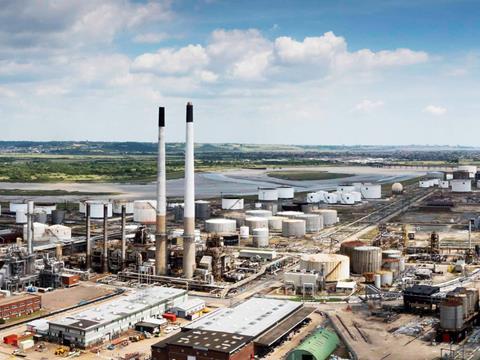
The food ‘super hub’
Land is being cleared for the UK’s first food logistics ‘super hub’ at the former Coryton oil refinery on the Thames Estuary, which its developer hopes will give rise to a modern food cluster for London.
The company behind the scheme, industrial developer iSec, hopes food logistics, food manufacturing and related added-value work will make up the majority of the 415-acre Thames Enterprise Park. The first occupiers are expected in 2019, though the whole site will take a decade or more to fully develop.
With a rail freight connection, proximity to the motorway network and its location next door to Dubai Ports, the hub promises an ideal location and potential for food businesses to share infrastructure and services, says Mike Forster, iSec’s development director. “We are intending to feed London from this facility.”
Most or all of the various processes foods go through from arrival at port, such as thawing, re-chilling, processing and repackaging, could in theory be handled at such a hub before onward delivery direct into central London in less than an hour.
Such diverse activity on one site could slash the miles between various facilities that make up a typical food journey. It would also create potential flexibility in distribution, from loads by pallet, roll cage or even individual items.
“At a super hub you can have food stores, added-value services and distribution, potentially all in one building with a large number of occupiers. Being next to other food-related enterprises means they can feed off each other’s supply chains. That saves them money and helps cut their carbon footprint,” says Forster.
Above all the site offers flexibility and scale. There is potential for large and high multi-floor facilities, he adds. “Automation is going to drive this. We can go up to 45 metres here. The higher you can go, the more you can stack. There’s five million sq ft in terms of floor plate here but if you go up three levels, that’s 15 million sq ft.”
The company is also exploring innovative waterborne ‘last mile’ logistics solutions up the Thames and into the capital from the jetties on the site linking to the 32 protected wharves along the river.
“London population growth is a ticking time bomb, along with the congestion challenge and issues around air quality,” says Natalie Chapman, the Freight Transport Association’s head of policy for London. “We have to do something about all of this.”
Particularly given the backdrop of consumers demanding increasingly fast, efficient last mile fulfilment of their groceries. Already the rise of services such as Amazon Fresh and Deliveroo (which is set to boost its network of London kitchens to 79 in the coming months) are indicators of a troubling macro trend for traditional logistics operators.
According to an Institute of Grocery Distribution (IGD) survey, 60% of UK shoppers expect they will be getting groceries ordered online delivered to their door by 2022. The UK online grocery market will grow by 53.8% and the convenience market by 17.7% from 2017 to 2022, says the IGD, while the food to go sector growth will compound annually by 6.2%.
“The drive to be closer to the customer and to serve them more frequently is likely to further add to congestion as delivery vehicles may travel less full,” says Alistair Balderson, the IGD’s head of supply chain.
Any solution to these rising costs and complexities will therefore need to involve a radical combination of new space at scale, automation and other technological solutions, as well as collaborative approaches between food and drink operators.
Currently the abilities of the sector to adapt are limited by a dearth of industrial space. Overall demand for additional urban logistics space is expected to grow by 1.2 million sq m by 2021 in London and is already at a premium. Industrial rents are set to outpace other commercial space in London, averaging 6.1% annually over the next four years, according to JLL.
Food operators must also compete with other occupiers with less exacting demands for new facilities. SEGRO, owner of the biggest light industrial logistics portfolio in London with 12.5 million sq ft in 55 locations, reports vacancy rates of 4% - an all-time low. “There is clearly a need to upgrade and revitalise the supply chain but supply is low and limited,” says Alan Holland, its London business unit director. “A lot of F&B operators need better premises nearer to central London. At the moment I need 30,000 sq ft units but the way demand is going in central London from requests from our clients, these might be more like 50,000 sq ft soon.”
Multiple ‘micro’ sites of less than 10,000 sq ft inside zone two are also becoming strategic necessities as food and parcels operators look to get closer to the customer, adds Holland. Park Royal, supplying an estimated one third of London’s food, is in high demand. “Industrial rents there are accelerating rapidly at the moment, driven by a lack of supply. We are seeing rents of £15-£20 per sq ft in Park Royal,” says Tessa English, industrial research director at JLL.
But even Park Royal isn’t close enough for some operators, says Holland. “To get into the city from there still takes 40 to 50 minutes. Where we would like to be is much closer in the central activity zones.”
One large development currently in progress does at least hold the promise of meeting a good portion of the growing demand for space in and around the capital. iSec is clearing the site of what it hopes will be a huge new food cluster at a former oil refinery next door to DP World London Gateway (see box, above).
Thames Enterprise Park, as it is being called, would offer multiple solutions to London’s food supply pressures, claims the developer, providing a large expanse of new space for food operators to occupy and at the same time creating the opportunity to streamline the supply chain.
With few other sources of significant developable land in and around the capital, sweating the assets operators do have or that they can build will also be part of the answer. Building highly automated facilities is one means of increasing productivity, says Holland.
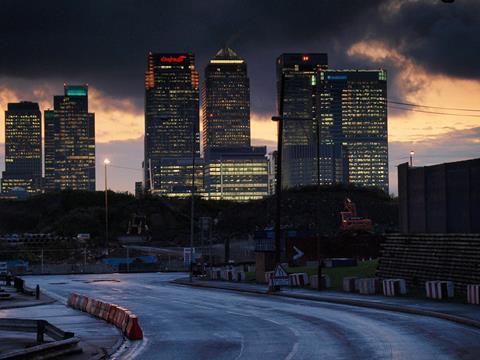
A long and winding road to London
It is becoming ever-clearer that supply chains configured decades ago by food and drink operators are not fit to meet changing customer demands, says Stephen Lawrence, CEO of industrial developer iSec.
“The food services model is broken and a lot of the existing food supply chain is cumbersome and inefficient.”
Imported food coming into Dubai Ports or Dover, for example, may be taken across the country on a journey for processing and then up to a distribution centre in the Midlands, often with the ultimate destination back in London and maybe even then on another journey to a last mile depot.
Such a long supply chain is hardly conducive to the growing need for flexibility and for fresh food as close to the end customer as possible and can add significantly to congestion, says Lawrence.
Consumer demand has rendered the ‘pallet in, pallet out’ national distribution centre model unresponsive to the shopping and eating revolution that now places great pressure on the last mile part of the supply chain, says Peter Ward, CEO of the UK Warehousing Association. “The supply chain grew up on centre of gravity modelling where you put distribution centres to go to stores all over country. This is now passé. You won’t serve the customer in London from Northampton.
“I walked past 18 convenience stores on one street this morning. This exponential growth has created a new model in logistics, with up to 20 deliveries a day from four to five service providers. It is a global phenomenon but London is the case study on this.”
SEGRO has started looking at intensifying land use by adding more floors, either vertically or by digging down. It is also exploring the potential for mixed-use developments combining industrial with office or even residential space. Such efforts are helped, in theory at least, by a three-year trial easing permitted development rights in some urban areas. However, many London boroughs including Hackney, Islington, Southwark, Hounslow, Hammersmith & Fulham, Hillingdon and Brent have looked to limit developers’ freedom to originate such mixed-use schemes.
In a bid to share scarce space and limit vehicle movements it may be that multiple food suppliers will need, or be compelled, to band together to supply their end customers. Occupiers on Regent Street are already compelled to use the Clipper Logistics-run consolidation centre by their landlord, the Crown Estate, an initiative resulting in an 80% fall in lorry movements associated with retailers on Regent Street.
Consolidation facilities
Property group Savills has identified consolidation facilities for goods coming into town as a likely future sector in industrial space, says Bridget Outtrim, director in the company’s south east industrial team. A sign of things to come, she says, may be the recent development in the City of 22 Bishopsgate, which only got planning permission because deliveries are serviced from a remote consolidation centre.
The difficulty with industry-wide consolidation centres is getting the business model to work, says the FTA’s Chapman. “Generally they are heavily pump primed by public funding, and you are putting another link in the supply chain if the product is already well consolidated.”
In order to realise transformative logistics efficiencies required for London’s vast food sector, however, broad industry-wide collaboration may be needed, and may even be imposed.
Pilot schemes will be needed to explore the many practical difficulties and the commercial potential of such a venture in London, but interest in the idea of collaborating is growing among grocers and food service businesses. A shared ‘white label’ delivery network used by multiple members was mooted at a recent IGD conference, says Balderson.
“One of the most thought-provoking questions was whether we as an industry should be looking towards a shared van type solution, a delivery truck with eight or 10 supermarket logos on the side. Maybe that is the way things need to go. It happens already for manufactures and to some extent for retailers. Why not take it to the next level?” Particularly when the alternative might be a complete and utter breakdown in the flow of food and drink to the capital.







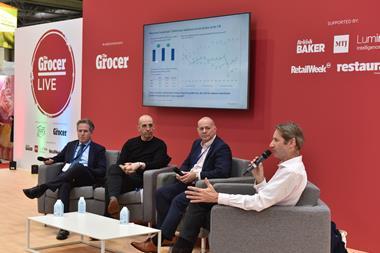



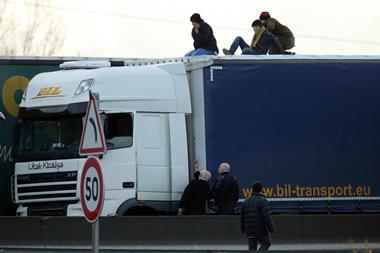

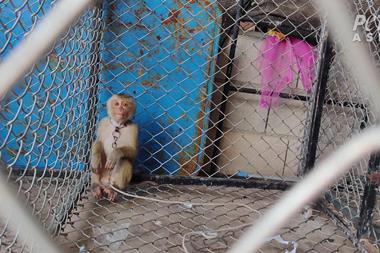

No comments yet